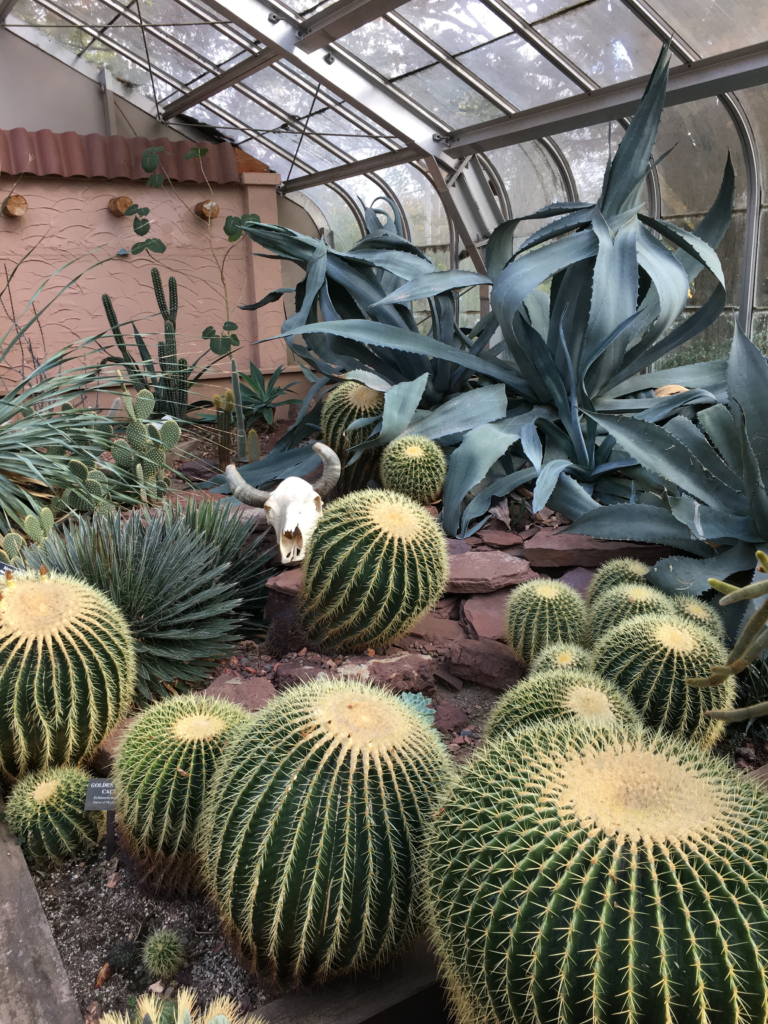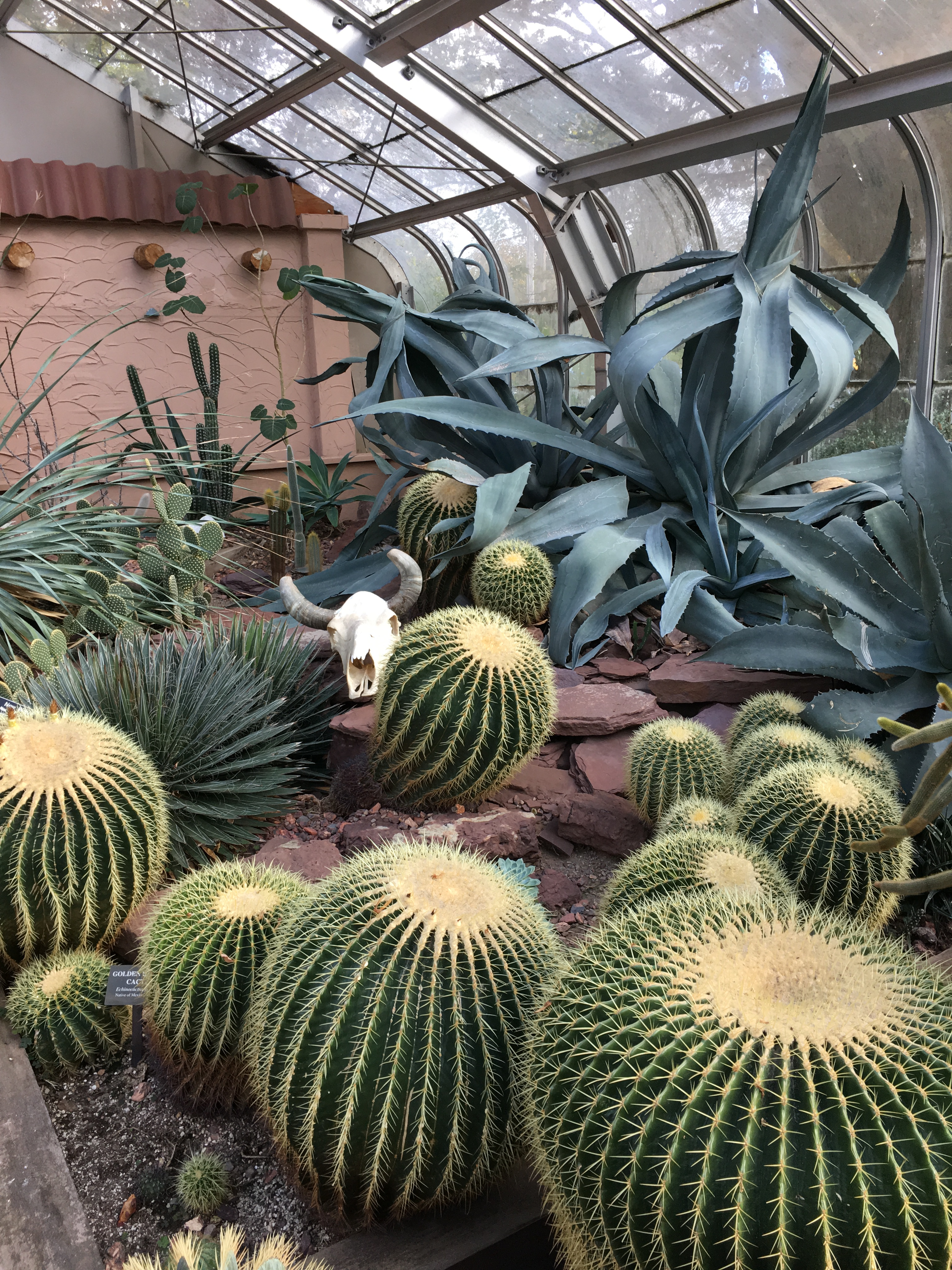Welcome to a place where the trees follow you with their gargantuan eyes and the turtles from Shellville greet you like they are far from a surprise. And be careful, you don’t want to trip over a button quail.
Since its inception in 1911, the Lamberton Conservatory, found in Highland Park, has provided Rochesterians with a space to appreciate diverse flora and fauna.
“The park was originally designed with the well-being of the people in mind, some place to go and enjoy nature. And I think the conservatory was an extension of that,” said Noelle Nagel, who works for Monroe County’s Department of Parks as a horticultural interpreter. “Most people who were around here in 1911 didn’t get to travel a lot and see some of the tropical plants.”
The exterior of the greenhouse greets visitors with a white pentagon-shaped portico with two symmetrical ionic columns and a large rusted bronze medallion. More bronze connects a bust of Alexander B. Lamberton, the place’s namesake, to the top of a Grecian overhang. The connectors are vines, which hold his memorial, a cross, a deer head and a scroll. An 1866 University of Rochester graduate, Lamberton — who, like the Lorax, spoke for the trees — welcomes his visitors with a bushy mustache and stern eyes. Lamberton is the man who brought the park system, including the Seneca Park Zoo and all of its animals, to Rochester.
The conservatory has proved popular with students.
“I wanted to absorb and learn about everything that was around me,” senior Madeline Mullholand said.
Mullholand was perplexed in her temporary wonderland. After entering the greenhouse, she was compelled by Shellville, the conservatory’s colony of 10 turtles. Their eyes were wide and their necks, embroidered with yellow blobs, were stretched.
Within their little community, the box and Mexican wood turtles, along with the Russian and marginated tortoises, enjoyed a modest feast consisting of lush broccoli stalks and red bell pepper wedges. One tiny turtle apprehensively scampered for the pepper piece, eyeing it as if it were the reptilian Holy Grail. Twenty-five aquatic leatherbacks flitted around from pond to pond and even basked in the sun when graced with the opportunity.
Aside from the turtles was Chuck Norris. Norris, a lone tortoise, had been exiled to live underneath a citrus tree. Once a former class pet for a local second grade class — according to Nagel, who also serves as the main caretaker and director at the Lamberton — his personality has kept him from socialization.
“He’s very sexually aggressive, let’s be blunt,” Nagel said. “A lot of turtles do a lot of biting and that’s all part of the mating ritual and [Chuck Norris] drives the other ones crazy. That’s why he lives alone.”
Mr. Norris and the other 35 turtles arrived at the Lamberton at least six years ago after one was donated. Nagel thought the one looked lonely, and after returning to the conservatory one morning, she noticed two others had been dropped off.
The mellow crawling creatures aren’t the only mobile residents at the Lamberton.
“I’m afraid you have to blame me,” Nagel said in response to a question about the others.
Donated button quails were bobbing around, and roaming the greenhouse like Queen Elizabeth II is Lucky the mallard duck.
Lucky was found by an employee on a baseball field, all alone without siblings or a mother. The Lamberton decided to raise the duckling and let her go eventually, but the spunky mallard didn’t want to leave. The duck always engages with visitors and performs for anyone willing to watch and be a part of her show.
If on a treasure hunt or just casually strolling through the greenhouse, adjacent to Shellville and the desert environment — which includes barrel cacti, trees with leaves the size of a human’s wingspan, and a Georgia O’Keeffe inspired cow skull — are many wooden dedication chairs. Written on the seats are the names of people who were closely bounded to the park and the conservatory.
Sitting in the tropical dome room, totally enamored by the quails and turtles, was retired lawyer Rob Boxer. In a blue sweater and white sneakers, the former attorney especially enjoys staying put to “sulk in the atmosphere” of the Lamberton.
“I come here for the tranquility, I love the plants, flowers and love to see people’s reactions to the quail and turtles,” he said. “I mainly come in the winter. On a sunny winter day, no matter how cool it is, [in here] it feels like being in the tropics.”
The Lamberton is a refuge for its patrons, serving to provide some deserved peace to residents like Boxer or some essential mindfulness to overwhelmed UR students.
“I become so absorbed by the stress of college that I forget the beautiful benefits that come with spending time in nature,” senior Tamar Prince said. “I left feeling better and more calm. People rarely speak of going to see nature, especially not in the dead of winter in Rochester. It was refreshing to be in nature.”
Scudder discussed the Lamberton’s popularity, deemed it “trendy,” and believes many have caught on from Instagram and social media. But, while Nagel appreciates the business, she values the clandestine nature of the conservatory.
“I do really get a kick out of hearing people say that they didn’t realize this place was even here and that they are going to come back time and time again,” she said. “We are sort of a hidden treasure and I must admit I don’t think that’s a bad thing sometimes.”
Nagel understands the educational responsibility of the Lamberton, too. She wants members of the Rochester community to grasp the absolute necessity of plant life. The signs dotting the place are written with personality, ensuring the conservatory doesn’t appear museum-like.
“I really like first thing when I come in and there’s nobody here and the birds are running around and the duck is quacking and the trulls are splashing around and when the suns comes up and I’m out there with my hoses, watering and it’s beautiful, just beautiful, ” she said. “It’s just so good for you to be surrounded by all these living things. it’s a happy place, my happy place.”



